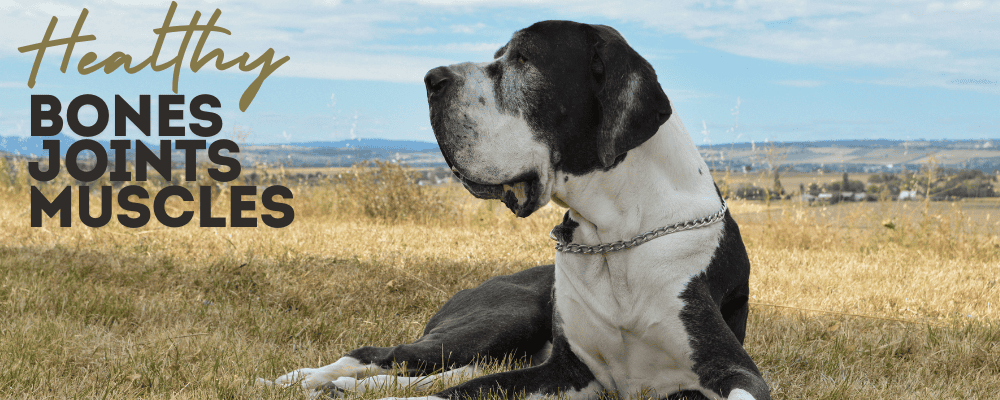For August, our blog articles will feature information on Healthy Bones, Joints, and Muscles. These
body parts are important because they determine your pet’s shape, support its weight, and provide
protection for the vital organs. Let’s start with some basic information:
What do bones do?
Bones provide rigid structure to the body and shield internal organs from damage. They also house bone
marrow, where blood cells are formed, and they maintain the body’s reservoirs of calcium and
phosphorus. Old bone tissue is constantly replaced with new bone tissue in a process called remodeling.
This helps keep the bones healthy.
What do joints do?
Bones come together to form joints. The type of joint formed determines the degree and direction of
motion. For example, joints with a ball-and-socket formation like the hip allow for rotation, while hinge
joints such as the elbow only allow bending and straightening. Some joints do not move at all. In a joint,
the ends of the bones are covered with cartilage, which is a smooth protective tissue that helps reduce
friction as joints move.
What do Muscles do?
There are a few different types of muscles in the body. The heart is made of a unique muscle type called
cardiac muscle. Smooth muscle helps facilitate many processes in the body, such as the flow of blood
(by surrounding arteries) and the movement of food along the digestive tract. Skeletal muscles are
responsible for posture and movement. They are attached to bones and arranged around the joints.
Skeletal muscles, joints and bones together make up the musculoskeletal system.
How do I know if my pet’s bones, joints and muscles are healthy?
During your pet’s annual preventive care exam, your veterinarian will be checking for any subtle signs of
early changes in these structures. In younger pets we will also check for risk factors that may predispose
them to problems in the future. In between, watch for any signs of lameness or disability and let us
know about it. These are the early signs of pain. Dogs and cats won’t cry until pain is very severe.
Though many people don’t give it much thought, it’s important to keep your pet’s bones, joints and
muscles strong and resilient throughout his life. This month we will be discussing what you can do to
help keep these components healthy and the possible risks of damage to these components if not
properly cared for.
